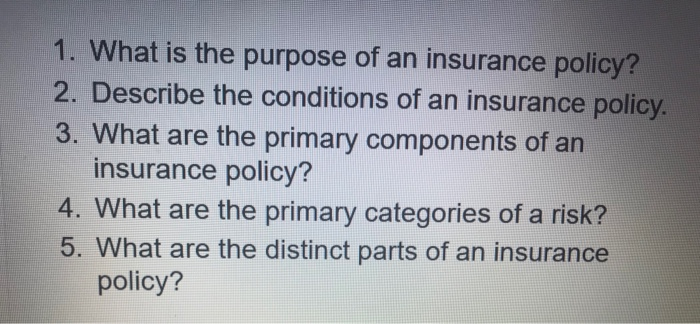Our Pacific Prime PDFs
Our Pacific Prime PDFs
Blog Article
What Does Pacific Prime Mean?
Table of Contents3 Easy Facts About Pacific Prime DescribedGetting The Pacific Prime To WorkThe Main Principles Of Pacific Prime The Best Guide To Pacific Prime
In many states, the insurer is required to send you a duplicate of the changes to your plan. It is essential that you read Recommendations or Cyclists so you understand how your policy has actually transformed and if the policy is still ample to fulfill your needs. To obtain a duplicate of your insurance plan, please call your insurance agent or company.
The Institute of Medication (IOM) Board on the Repercussions of Uninsurance launches a prolonged exam of proof that addresses the importance of medical insurance protection with the magazine of this record. Coverage Matters is the very first in a series of six reports that will certainly be released over the following 2 years recording the reality and effects of having an estimated 40 million people in the USA without health insurance policy coverage.

Not known Details About Pacific Prime
The goal of this collection of research studies is to redouble policy interest on a longstanding issue. Complying with the lengthiest financial growth in American background, in 1999, an approximated one out of every 6 Americans32 million adults under the age of 65 and even more than 10 million childrenremains without insurance (Mills, 2000).

10 percent of the population accounts for 70 percent of health and wellness treatment expenditures, a connection that has actually remained continuous over the past 3 years (Berk and Monheit, 2001) - expat insurance. Thus wellness insurance coverage continues to serve the feature of spreading out risk also as it increasingly funds regular care. From the viewpoint of health care providers, insurance lugged by their people helps protect a profits stream, and communities take advantage of economically practical and steady health and wellness care specialists and organizations
Government gives medical insurance to populaces whom the private market might not serve properly, such as disabled and seniors, and populaces whose access to healthcare is socially valued, such as kids and expecting females. The best ends of medical insurance coverage for the specific and communities, including work environment neighborhoods of staff members and companies, are enhanced health and wellness end results and lifestyle.
Pacific Prime for Dummies
Staff members place health insurance coverage initially without a doubt in importance amongst all the benefits used in the work environment (Salisbury, 2001). Although there have been substantial investments of individual and public funds to supply medical insurance, lots of people still have no protection. Despite comprehensive coverage of study searchings for and wellness care research study results, the public remains overwhelmed and mistaken about Americans without health insurance and the effects of doing not have insurance coverage.

Without concern, the complexity of American healthcare funding devices and the wide range of sources of information add to the general public's confusion and suspicion about medical insurance data and their interpretation. This report and those that will certainly comply with goal to distill and offer in easily understandable terms the comprehensive research that births on questions of medical insurance coverage and its relevance.
Fifty-seven percent of Americans questioned in 1999 believed that those without wellness insurance coverage are "able to obtain the care they need from medical professionals and hospitals" (Blendon et al., 1999, p. 207). In 1993, when nationwide interest was concentrated on the issues of the uninsured and on pending health treatment legislation, simply 43 percent of those surveyed held this belief (Blendon et al., 1999).

They also get fewer precautionary services and are less most likely to have routine look after chronic problems such as high blood pressure and diabetes. Persistent illness can cause pricey and disabling difficulties if they are not well managed (Lurie et al., 1984; Lurie et al., 1986; Ayanian et al., 2000). One national survey asked more than 3,400 grownups about 15 extremely major or morbid problems.
Examine This Report about Pacific Prime
Extra evidence is offered later in this phase in the conversation of insurance policy and accessibility to healthcare. https://pxhere.com/en/photographer/4223924. Individuals without medical insurance are young and healthy and choose to do without protection. Practically half (43 percent) of those checked in 2000 thought that individuals without medical insurance are more probable to have illness than individuals with insurance policy
Voters and policy manufacturers in focus team discussions characterize those without insurance coverage as youths Learn More that have the possibility to be covered and feel they do not need it (Concierge Novelli, 2001). Contrasted to those with at least some private insurance coverage, the without insurance are much less most likely to report being in excellent or very excellent health and wellness (Company for Medical Care Research and Top Quality, 2001).
RESOURCE: Center for Price and Funding Studies, Agency for Healthcare Research and High quality, based upon MEPS information. Youthful grownups in between 19 and 34 are much more most likely to do not have health and wellness insurance coverage than any other age team. This is primarily due to the fact that they are less typically qualified for employment-based insurance as a result of the nature of their job or their short tenure in it.
The understanding that individuals without insurance coverage have better-than-average health and wellness complies with from perplexing the fairly young age profile of the without insurance with the far better health, on average, of more youthful individuals. This obscures the link between health condition and health and wellness insurance. For those without access to workplace medical insurance, poor health is a prospective obstacle to acquiring nongroup coverage since such insurance coverage might be extremely priced, exclude preexisting problems, or be simply unavailable.
Report this page